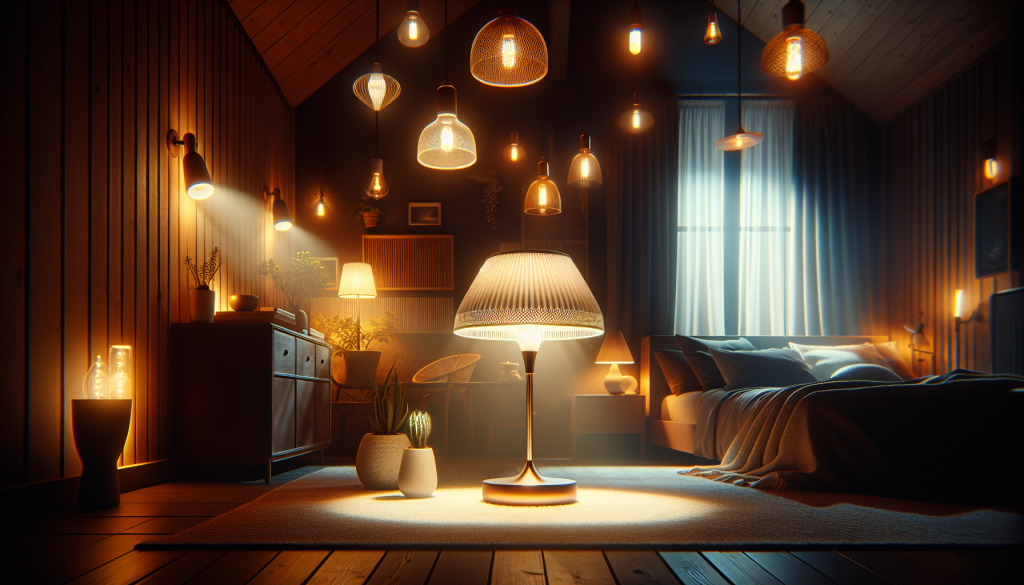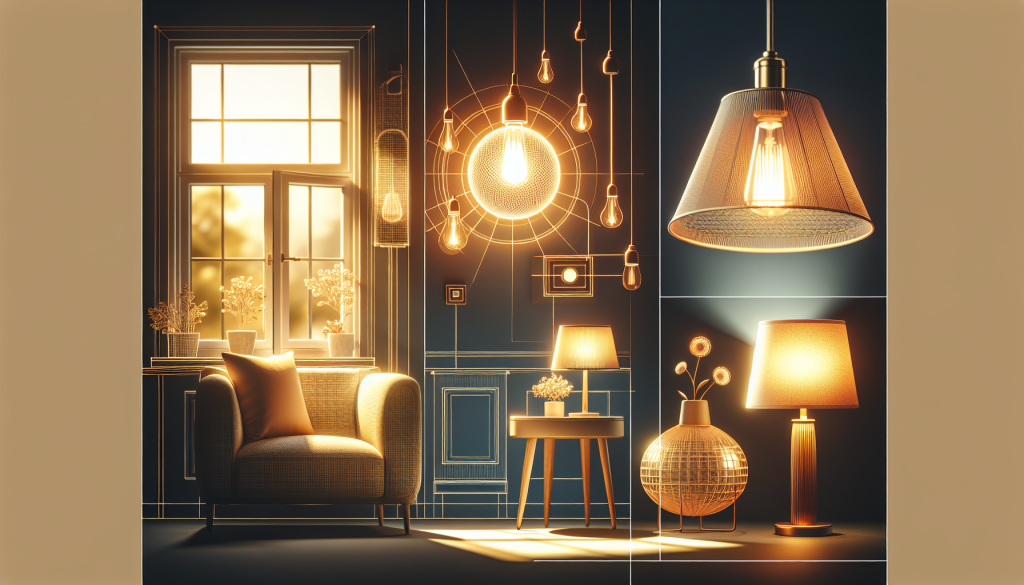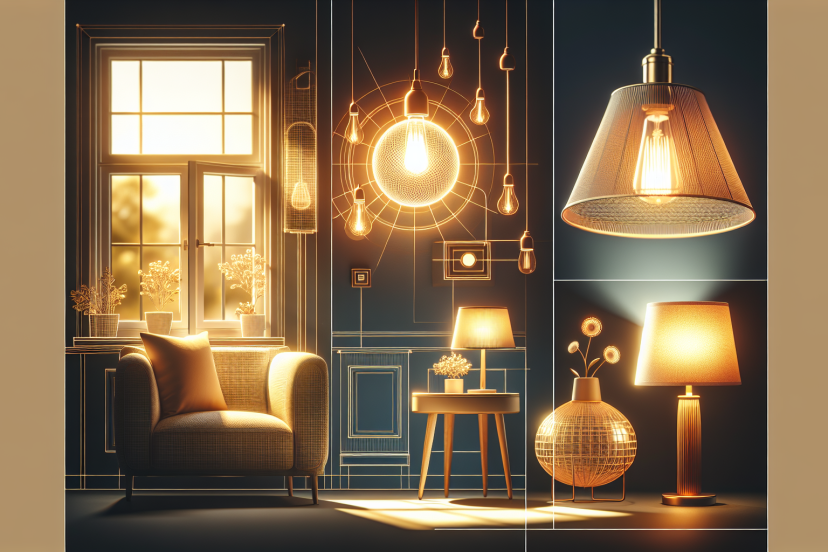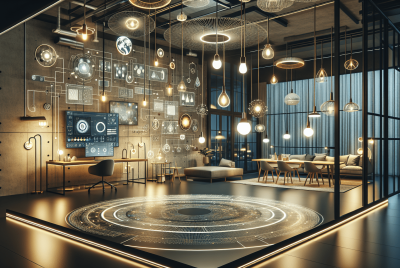Which Lighting Is Best For Home?
Choosing the right lighting for your home can make a significant difference in creating the perfect ambiance and enhancing the overall aesthetic appeal. Whether you’re looking to add warmth to your living room, create a cozy atmosphere in your bedroom, or illuminate your workspace effectively, understanding which lighting options best suit your needs is key. From the soft, gentle glow of ambient lighting to the focused brightness of task lighting, this article explores the various lighting options available, helping you make an informed decision for your home.
1. Importance of Lighting in the Home
Lighting is an essential aspect of creating a warm, welcoming, and functional environment in your home. It serves not only practical purposes but also plays a significant role in setting the mood, enhancing safety and security, and highlighting the beauty of your home décor and architecture. By understanding the importance of lighting, you can transform your living spaces into inviting and aesthetically pleasing areas that cater to your specific needs and preferences.
1.1 Enhancing Ambiance and Mood
One of the key reasons why lighting is crucial in the home is its ability to create and enhance ambiance and mood. The right lighting can completely transform the atmosphere of a room, making it feel cozy, vibrant, or tranquil, depending on your desired effect. Whether you want soft, warm lighting for a relaxed evening or bright, cool lighting for focus and productivity, the right lighting fixtures and controls can help you achieve your desired ambiance.
1.2 Improving Safety and Security
In addition to enhancing ambiance, proper lighting is essential for ensuring the safety and security of your home. Adequate lighting, both indoors and outdoors, helps prevent accidents by illuminating potential hazards and obstacles. Well-lit entrance areas, pathways, and staircases minimize the risk of trips and falls. Additionally, a well-lit home acts as a deterrent to intruders, making your property less attractive to potential burglars.
1.3 Highlighting Home Décor and Architecture
The right lighting can also be a powerful tool for showcasing your home décor and architectural features. Well-positioned lighting fixtures can draw attention to artwork, focal points, or unique architectural elements, adding depth and visual interest to your living spaces. By strategically selecting and placing light fixtures, you can bring out the best in your interior design choices and create a captivating ambiance that reflects your personal style.
2. Types of Lighting Fixtures
When it comes to choosing lighting fixtures for your home, there are various options available, each with its own unique characteristics and advantages. Understanding the different types of lighting fixtures will help you make informed decisions that align with your lighting goals and preferences.
2.1 Incandescent Lighting
Incandescent lighting is one of the most familiar types of lighting, known for its warm and cozy glow. These traditional light bulbs work by passing electricity through a filament, which then emits light and heat. While incandescent bulbs are affordable and provide a pleasing light quality, they are energy inefficient and have a shorter lifespan compared to newer lighting technologies.
2.2 Halogen Lighting
Halogen lighting is a more energy-efficient alternative to incandescent bulbs. These bulbs use halogen gas to extend the lifespan of the filament, resulting in a whiter and brighter light output. Halogen bulbs are commonly used in task lighting applications, such as desk lamps and under-cabinet lighting, where focused illumination is required.
2.3 Compact Fluorescent Lighting (CFL)
Compact Fluorescent Lighting (CFL) bulbs are a popular choice for energy-conscious homeowners. CFL bulbs use less energy than incandescent bulbs, last longer, and produce less heat. They are available in a range of color temperatures to suit different room aesthetics and purposes. However, CFL bulbs may take a few moments to reach full brightness and contain trace amounts of mercury, requiring proper disposal when they burn out.
2.4 LED Lighting
LED (Light Emitting Diode) lighting has become increasingly popular in recent years, thanks to its energy efficiency, long lifespan, and versatility. LED bulbs emit very little heat and can be dimmed to create the desired ambiance. They are available in various color temperatures and can produce a wide range of white light shades. While LED bulbs are initially more expensive than other options, their energy savings and extended lifespan make them a cost-effective choice in the long run.
2.5 Neon Lighting
Neon lighting is a unique and eye-catching option that can add a vibrant and retro touch to your home. Neon tubes filled with different gases create a colorful glowing effect when an electric current passes through them. Neon lighting is commonly used in signage and decorative accent lighting, allowing you to make a bold statement and add a touch of nostalgia to your living spaces.
2.6 Fiber Optic Lighting
Fiber optic lighting offers a creative and versatile lighting solution. Thin strands of transparent fibers transmit light from a remote light source to end points, creating a mesmerizing visual effect. Fiber optic lighting is often used for accent lighting, providing subtle, star-like illumination to add a touch of elegance and magic to your home.

3. Factors to Consider When Choosing Home Lighting
When selecting lighting for your home, it’s important to consider various factors to ensure you make the right choices that meet your needs and preferences. Here are some key factors to keep in mind:
3.1 Purpose and Functionality
Consider the purpose and functionality of each space in your home. Different rooms require different types and levels of lighting. For example, the lighting needs in a living room may differ from those in a kitchen or bedroom. Understanding the intended use of each space will help you determine the appropriate lighting fixtures and controls to create the desired atmosphere and functionality.
3.2 Energy Efficiency
Energy efficiency is a crucial consideration in today’s environmentally conscious world. Opting for energy-efficient lighting options, such as LED bulbs or CFLs, can help reduce energy consumption and lower your electricity bills. Look for lighting fixtures with ENERGY STAR certification, as they meet strict energy efficiency criteria and offer long-term savings.
3.3 Color Temperature and White Balance
The color temperature of light can significantly impact the ambiance and mood of a room. Warmer color temperatures (around 2700K to 3000K) create a cozy and inviting atmosphere, ideal for living spaces and bedrooms. Cooler color temperatures (around 5000K to 6000K) provide a bright and energetic feel, suitable for task-oriented areas like kitchens and home offices. Consider the desired ambiance and activities in each room when choosing the color temperature of your lighting fixtures.
3.4 Optimal Light Distribution
To ensure uniform lighting throughout a room, consider the light distribution capabilities of different fixtures. Some fixtures, like recessed lights or pendant lights with adjustable heads, allow you to direct light where it’s needed most. This ensures that all areas of the room receive adequate illumination, minimizing shadows and uneven lighting.
3.5 Durability and Maintenance
Consider the durability and maintenance requirements of the lighting fixtures, especially for high-traffic areas or outdoor spaces. Choose fixtures that are built to withstand the demands of daily use and are easy to clean and maintain. Additionally, consider the lifespan of the bulbs or light sources used in the fixtures to avoid frequent replacements and associated costs.
3.6 Cost and Affordability
Lastly, consider your budget and the overall cost of the lighting fixtures and installation. While high-quality lighting fixtures may have a higher upfront cost, they offer better performance, energy efficiency, and durability, resulting in long-term savings. Evaluate your priorities and determine the right balance between affordability and quality for your specific lighting needs.
4. Room-Specific Lighting Considerations
Different rooms in your home have unique lighting requirements to cater to their specific functions and aesthetics. Here are some room-specific lighting considerations to keep in mind:
4.1 Living Room
In the living room, a combination of ambient, task, and accent lighting can help create a versatile and inviting atmosphere.
4.1.1 Ambient Lighting
Ambient lighting provides overall illumination in the room and sets the general mood. Ceiling-mounted fixtures like chandeliers or recessed lights can provide even ambient lighting. Consider using dimmer switches to adjust the brightness levels and create a cozy ambiance for relaxation or a brighter environment for social gatherings.
4.1.2 Task Lighting
Task lighting in the living room is essential for performing specific activities such as reading, knitting, or working on a puzzle. Floor lamps with adjustable heads or table lamps positioned near seating areas can provide focused illumination for these tasks.
4.1.3 Accent Lighting
Accent lighting adds depth and visual interest to the living room by highlighting specific architectural features, artwork, or decorative objects. Wall sconces, track lights, or recessed adjustable fixtures can be used to create accent lighting effects. Experiment with different angles and intensities of light to achieve the desired results.
4.2 Kitchen
The kitchen is a highly functional space that requires a combination of general and task lighting to ensure optimal visibility and safety.
4.2.1 General Lighting
General lighting in the kitchen should provide even illumination throughout the space. Ceiling-mounted fixtures like flush mounts or pendant lights can provide adequate ambient lighting. Consider the size and layout of your kitchen when determining the number and placement of these fixtures to avoid any shadows or dark corners.
4.2.2 Task Lighting
Task lighting is crucial in the kitchen, especially in areas where food preparation, cooking, and cleaning take place. Under-cabinet lights or recessed lights above the countertops can offer focused lighting that enhances visibility and functionality. Consider using adjustable fixtures or dimmer switches to customize the lighting levels based on the specific tasks being performed.
4.2.3 Under Cabinet Lighting
Under-cabinet lighting not only provides task lighting but also adds an element of ambiance and visual interest to your kitchen. LED strip lights or puck lights installed underneath the upper cabinets can illuminate the countertop workspace, highlight backsplashes, and create a warm and inviting atmosphere.
4.3 Bedroom
The bedroom is a sanctuary for rest and relaxation, and the lighting choices should reflect this purpose.
4.3.1 Ambient Lighting
Ambient lighting in the bedroom should be soft and relaxing, creating a calm and soothing atmosphere. Ceiling-mounted fixtures with dimmer switches can provide gentle overall illumination. Consider using warmer color temperatures and diffused lighting to evoke a cozy and tranquil ambiance.
4.3.2 Task Lighting
Task lighting in the bedroom is essential for activities such as reading, getting dressed, or applying makeup. Bedside table lamps or wall-mounted sconces positioned near the bed can provide focused lighting for these tasks. Choose fixtures with adjustable heads or dimmer switches to adapt the lighting to your needs.
4.3.3 Bedside Lighting
Bedside lighting is an important consideration for comfortable and convenient nighttime reading or relaxation. Bedside table lamps or wall-mounted swing-arm lamps on each side of the bed can provide individual lighting control. Ensure that the height and placement of the fixtures offer proper illumination without causing glare or shadows.
4.4 Bathroom
In the bathroom, a combination of functional and decorative lighting is essential to create a well-lit and visually appealing space.
4.4.1 Vanity Lighting
Vanity lighting in the bathroom should provide even and shadow-free illumination for grooming tasks. Vertical fixtures or horizontal bath bar lights on each side of the mirror can help minimize shadows on the face. Consider using LED bulbs with high color rendering index (CRI) for accurate color representation during makeup application or shaving.
4.4.2 Shower and Bathtub Lighting
Lighting near showers and bathtubs requires extra attention to ensure safety and functionality. Waterproof and moisture-resistant fixtures, such as recessed lighting or wall-mounted fixtures rated for wet locations, should be used. Consider using brighter task lighting near the shower or bathtub to enhance visibility, and include dimmable fixtures to create a relaxing ambiance for bathing experiences.

5. Lighting Control Options
To enhance the functionality and convenience of your home lighting, consider different lighting control options that allow you to adjust and automate the lighting levels according to your needs.
5.1 Manual Switches and Dimmers
Manual switches and dimmers offer basic control over the lighting in your home. By installing dimmer switches, you can easily adjust the brightness levels to create the desired ambiance. Multiple switches can also provide individual control over different lighting zones or fixtures, giving you flexibility and customization options.
5.2 Smart Lighting Systems
Smart lighting systems offer advanced control and automation capabilities, allowing you to manage your home lighting using smart devices or voice commands. With smart lighting, you can set schedules, create lighting scenes, and adjust brightness levels remotely. Some systems even offer color-changing capabilities, enabling you to personalize the lighting according to your mood or activity.
5.3 Motion Sensors
Motion sensors can be a practical addition to your home lighting control, particularly in areas where hands-free operation is desired for energy efficiency or convenience. By integrating motion sensors into your lighting system, you can ensure that lights automatically turn on when someone enters a room and turn off when the space is vacant.
5.4 Timers
Timers are a useful tool for automating your home lighting based on specific schedules or routines. By presetting the on and off times, you can ensure that the lights are always turned on when needed, even when you’re away from home. Timers can enhance security by creating the illusion of occupancy and help conserve energy by avoiding unnecessary lighting.
6. Conclusion
Lighting is a vital aspect of creating a comfortable, safe, and visually appealing home. By understanding the significance of lighting and considering factors such as purpose, energy efficiency, light distribution, and room-specific requirements, you can select lighting fixtures that enhance the functionality and ambiance of each space. With a range of options including incandescent, halogen, CFL, LED, neon, and fiber optic lighting, there are choices available to suit every preference and budget. Additionally, exploring lighting control options like manual switches, smart lighting systems, motion sensors, and timers can provide added convenience and customization. By carefully considering and selecting the right lighting solutions, you can illuminate your home in a way that reflects your unique style, enhances your daily activities, and creates a warm and inviting environment for you and your loved ones.




